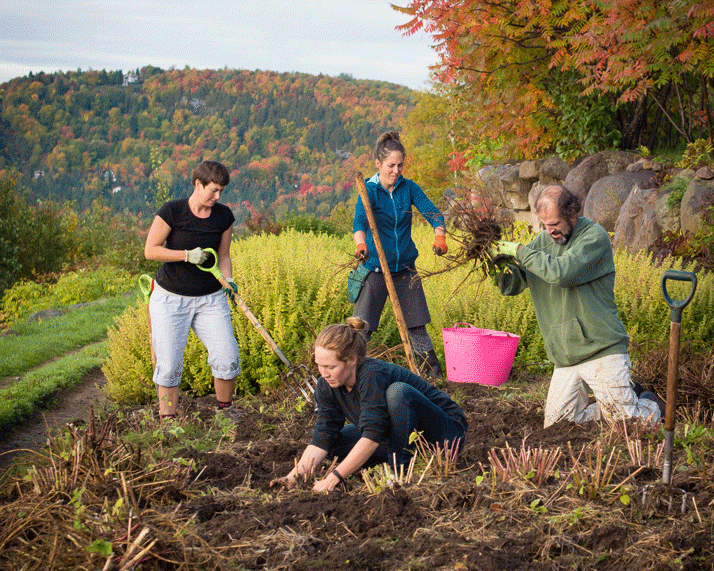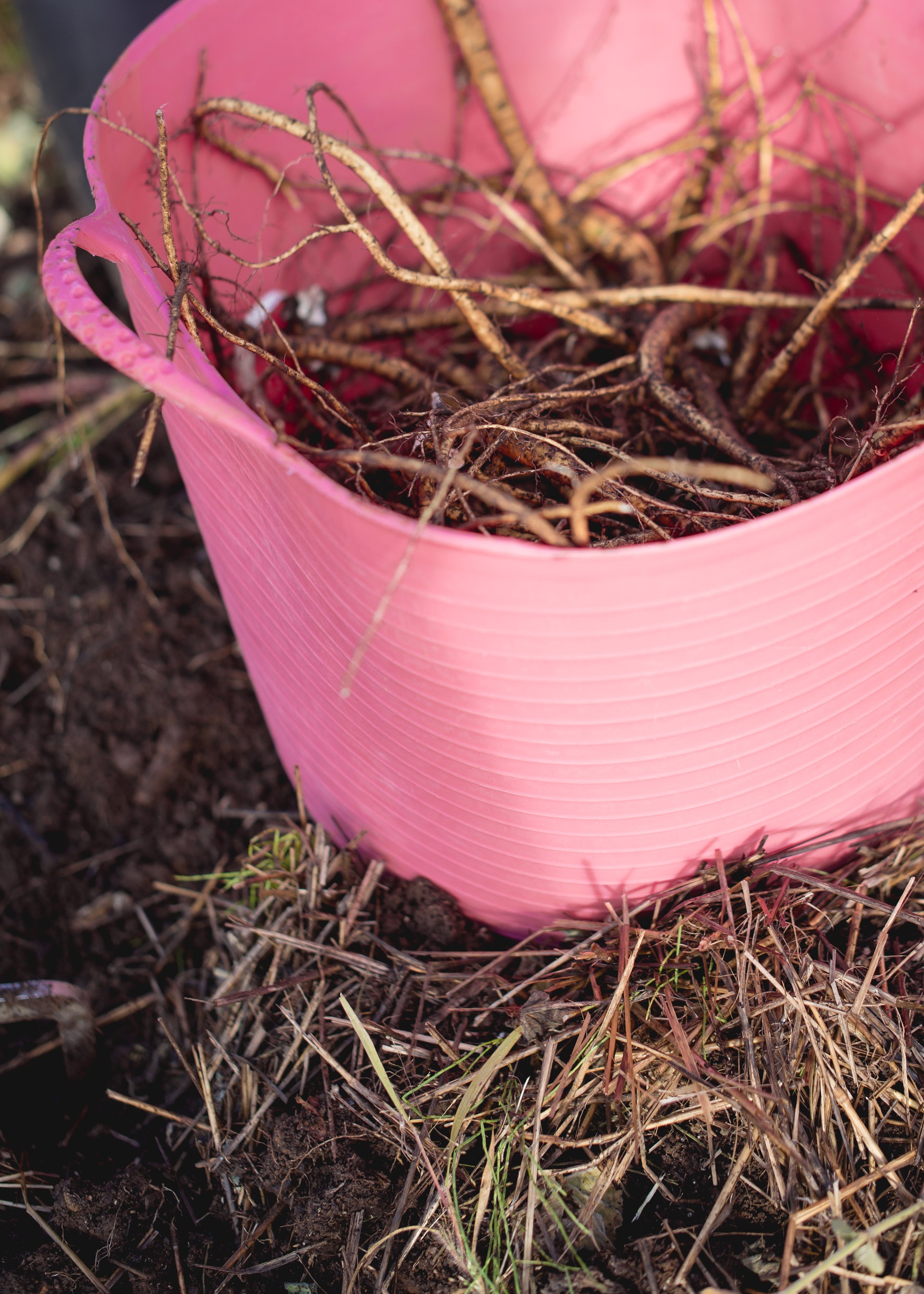Generally, the herbs we grow for their roots are harvested in the fall. At this time, fruiting is finished, aerial parts are wilted and the plant goes into dormancy to prepares for a new cycle next spring. The time is ripe to harvest marshmallow, rhodiola, burdock, astragalus, eleuthero, echinacea, valerian…
Harvesting roots is a dirty, labour-intensive job that really messes up the garden. We arm ourselves with shovels, boots, thick gloves and a lot of patience. The only advantage to harvesting roots is that it can be done in any weather: cold, rain, wind, sleet or snow, whereas leaves and flowers must be picked in dry sunny weather.
Determining the perfect moment to harvest roots is quite complex. Contrary to aerial parts which we can observe to determine if they are ripe or if rot or disease is present, we must depend on knowledge, keen observation, good judgement and extensive experience to determine when to gather roots. Some roots, like valerian, degenerate quickly after reaching their full potential and rot in the ground if they are not harvested on time. We are fortunate that Dominique, our Agricultural Director, is an expert and our team has amassed four decades of experience growing and harvesting medicinal herbs.

The roots of a perennial herb grow bigger each year. They must be left to grow for a while in order to reach their full potential, at least three years. Not only will the roots be bigger after a few years, but they will have defended themselves against bad weather and pests, which increases the complexity of their components and therefore the strength of their medicinal action. Herbs on our mountain are subjected to rigorous winters, hot summer sun, strong winds, too much or too little water, hungry groundhogs and numerous insects. To combat such stress, a plant develops substances that allow it to survive; it is much stronger than a plant that grew in a cozy environment. It then transmits to us its capacity to adapt and its resistance to stress.
Most of our roots are gathered after three years but woodland and slow-growing plants are left in the earth for 4 or 5 years. Once a root has been harvested, the plant is dead and the plot where it grew is empty. In order to harvest roots each year, we must at all times have a plot of first-year plants, one of second-year plants and one of third-year plants. We plant a parcel of each of our perennials every year so that we can harvest them three years later. Therefore, we have three plots of each root herb that we grow and only one third of those plants are mature and ready to harvest each year.
After harvesting roots, we sow a cover crop on that garden plot to nourish the soil and let it rest. The practice of rotating crops keeps the soil from being leached of nutriments so the following year, we will plant something different on the plot and we will plant this first-year perennial elsewhere in the garden. In a plot where root herbs grew, we will plant a leaf or flower herb to avoid leaching the same nutrients out of the soil. Cultivating roots not only requires intense labour but also meticulous planning.


